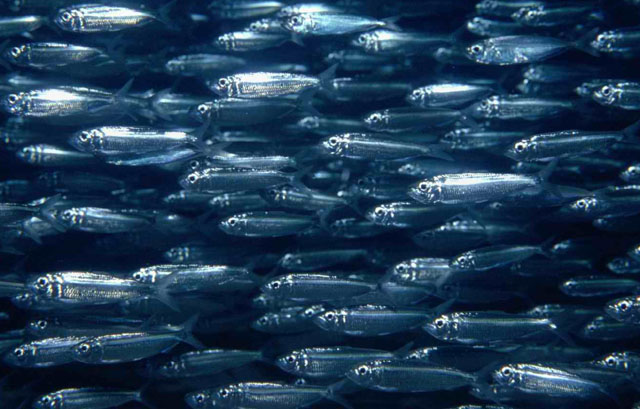| Dorosomatidae (Gizzard shads and sardinellas) |
| 16 cm SL (male/unsexed) |
|
pelagic-neritic; brackish; marine; depth range 0 - 50 m |
| Atlantic Ocean: Eastern Atlantic Ocean from Senegal southward to Congo, possibly to northern Angola (Ref. 188, 5286, 81269, 81631). |
|
Dorsal spines (total): 0-0; Dorsal soft rays (total): 16-19; Anal spines: 0-0; Anal soft rays: 16-21. Diagnosis: Body moderately deep, belly fairly sharply keeled (Ref. 188). Lower gillrakers 30-40 (Ref. 188). A black or golden spot behind gill opening; upper part of pectoral fin dusky; caudal fin pale yellow with dusky hind margin (Ref. 188). Sardinella rouxi resembles S. maderensis, which has more gillrakers and a grey caudal fin, its tips almost black (Ref. 188). It is distinguished from small S. aurita by having 1 unbranched and 7 branched pelvic fin rays vs. 1 unbranched and 8 branched in S. aurita, and no black spot on hind part of gill cover (Ref. 188).
Description: Body moderately deep (Ref. 188, 81269, 81631). Lower limb of first gill arch with 30-40 gill rakers (Ref. 81269, 81631). Dorsal fin with 16-19 fin rays; anal fin with 16-21 fin rays; pelvic fin with 8 fin rays (Ref. 81269, 81631). Scales cycloid: 42-45 in a longitudinal series to the base of caudal fin; 13 transversal scales in front of ventral fins; 16-19 prepelvic and 12-14 postpelvic mid-ventral scutes (Ref. 81269, 81631, 86940).
Colouration: Ground colour silvery with golden reflections; dorsal areas, snout and chin greyish-brown; a black or golden spot behind gill opening (Ref. 81269, 81631). Upper part of pectoral fins dark; caudal fin brownish-yellow, with a darker posterior margin (Ref. 81269, 81631). |
| Sardinella rouxi is found in inshore waters and along beaches, forming schools (Ref. 188). |
|
Data deficient (DD); Date assessed: 05 March 2018 Ref. (130435)
|
| harmless |
Source and more info: www.fishbase.org. For personal, classroom, and other internal use only. Not for publication.
